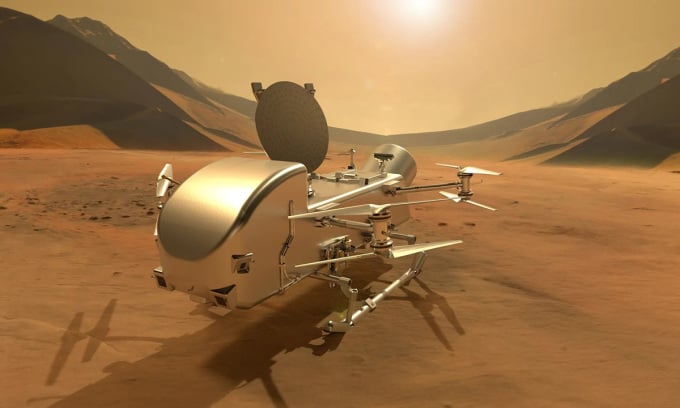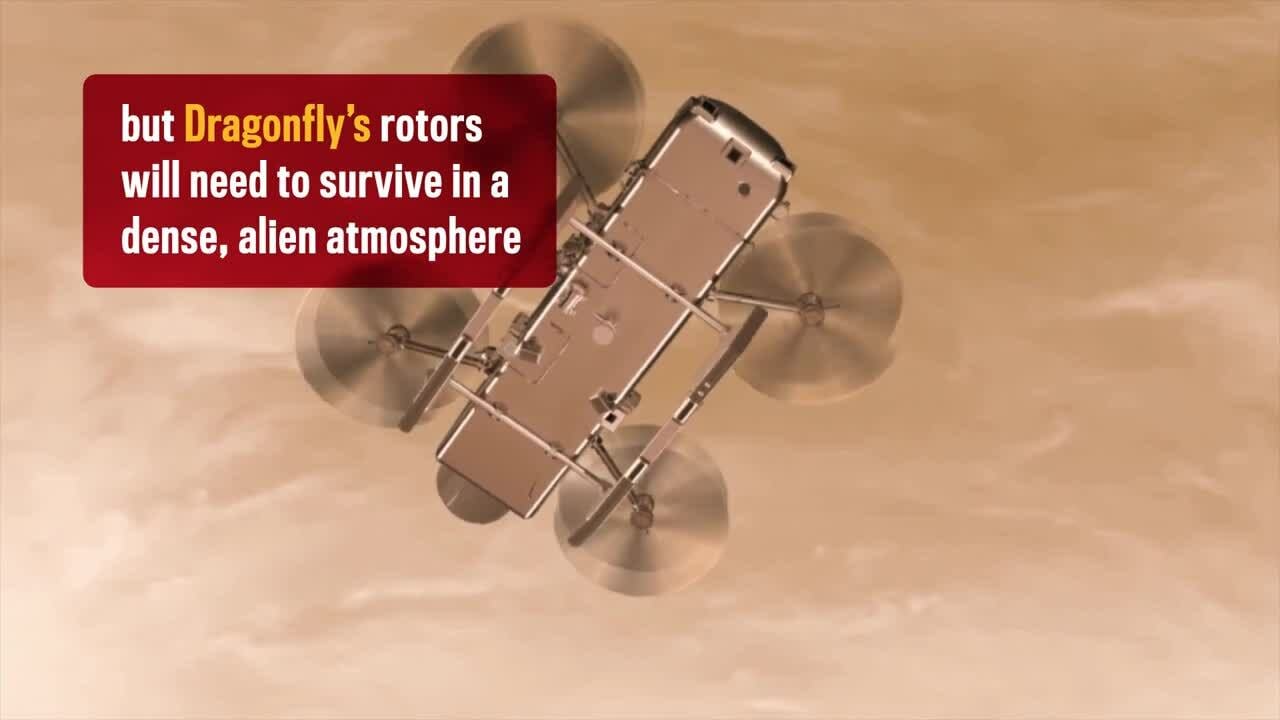The Dragonfly prototype, a drone as big as a car and planned to be launched to Saturn's largest moon, has just completed wind tunnel tests.

Dragonfly drone simulation. Photo: NASA/Johns Hopkins APL/Steve Gribben
With 63 flights exploring Mars, NASA's Ingenuity helicopter has been extremely successful, far exceeding its original mission goals. NASA has learned a lot from this first aircraft and applied it to a larger vehicle aimed at Titan - Saturn's largest moon, Interesting Engineering reported on October 24.
The Dragonfly drone is equipped with eight propellers and is about the size of a small car. A research team at the Applied Physics Laboratory (APL) at Johns Hopkins University in Maryland conducted experiments with a half-size prototype of the drone and shared a video on the Internet.
Dragonfly will be NASA's first mission to the surface of another "ocean world." Like Earth, Titan has a weather system, rivers, lakes, and seas on its surface. But unlike the blue planet, Titan's streams contain liquid methane instead of water. Still, scientists believe the moon could harbor alien life.
The new drone will study Titan’s surface, which humans have very little information about. One advantage it has over Ingenuity is that Titan has a significantly thicker atmosphere than Mars, meaning it will be easier to fly. Titan also has less gravity, so it will be less difficult to stay aloft.
Experts test the Dragonfly prototype. Video: APL
The new tests were conducted in wind tunnels at NASA’s Langley Research Center in Hampton, Virginia. The team tested Dragonfly in two different configurations to test landing and transition to flight.
“We tested conditions across the expected flight range at a variety of wind speeds, rotor speeds, and flight angles to evaluate the vehicle’s aerodynamic performance. We completed more than 700 test runs, including more than 4,000 individual data points. All test objectives were met, and the data will help increase the confidence of Earth-based simulation models before expanding to Titan conditions,” said test team leader Bernadine Juliano.
Dragonfly is scheduled to launch in 2027. If all goes well, it will reach Titan in 2034. Last year, NASA's James Webb Space Telescope provided unprecedentedly detailed observations of the moon. When Dragonfly arrives, it could change what we know about Titan and the evolution of the solar system.
Thu Thao (According to Interesting Engineering )
Source link



![[Photo] President Luong Cuong attends the inauguration of the international container port in Hai Phong](https://vphoto.vietnam.vn/thumb/1200x675/vietnam/resource/IMAGE/2025/5/13/9544c01a03e241fdadb6f9708e1c0b65)


![[Photo] Prime Minister Pham Minh Chinh meets with US business representatives](https://vphoto.vietnam.vn/thumb/1200x675/vietnam/resource/IMAGE/2025/5/13/5bf2bff8977041adab2baf9944e547b5)

































































































Comment (0)